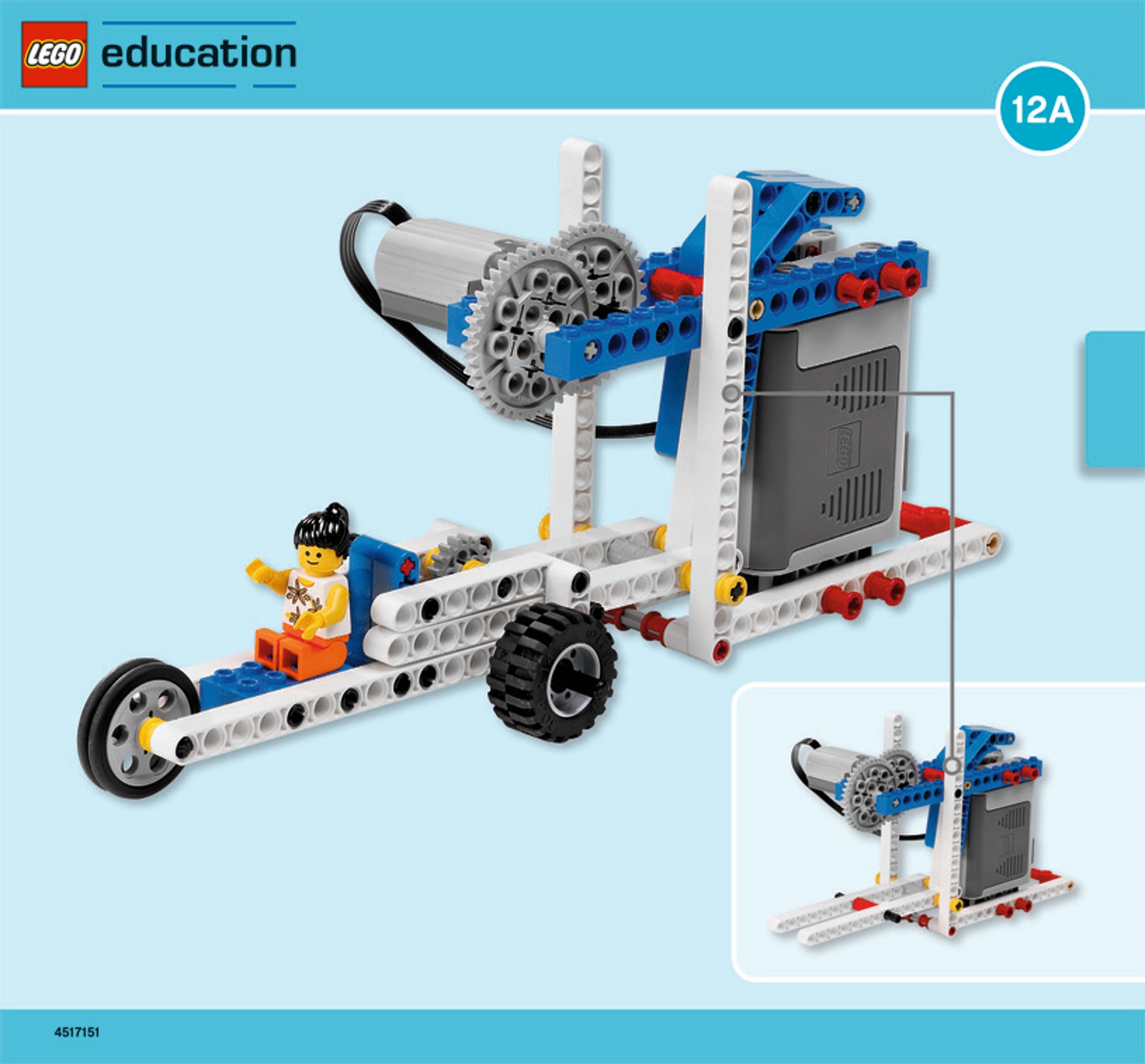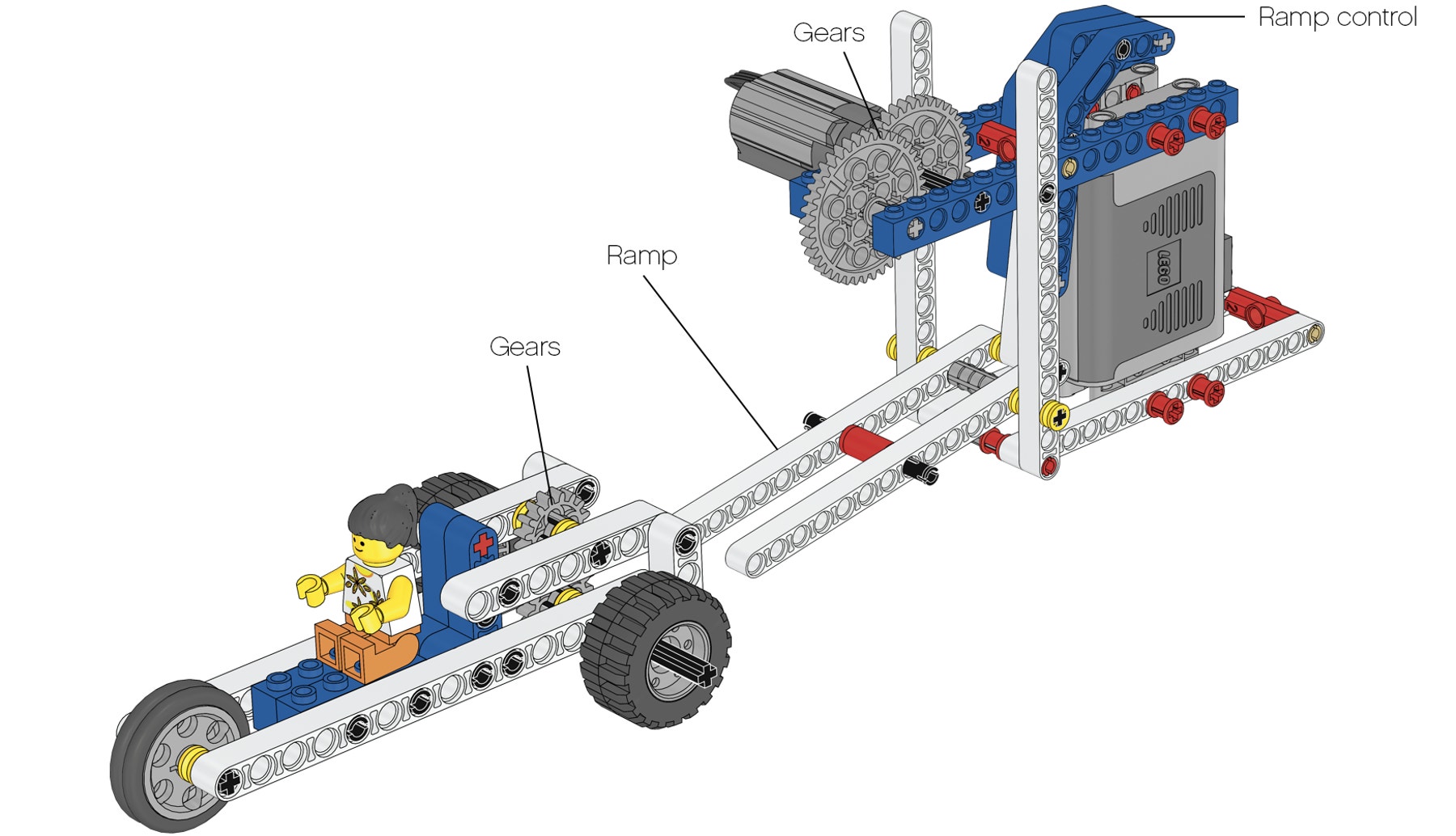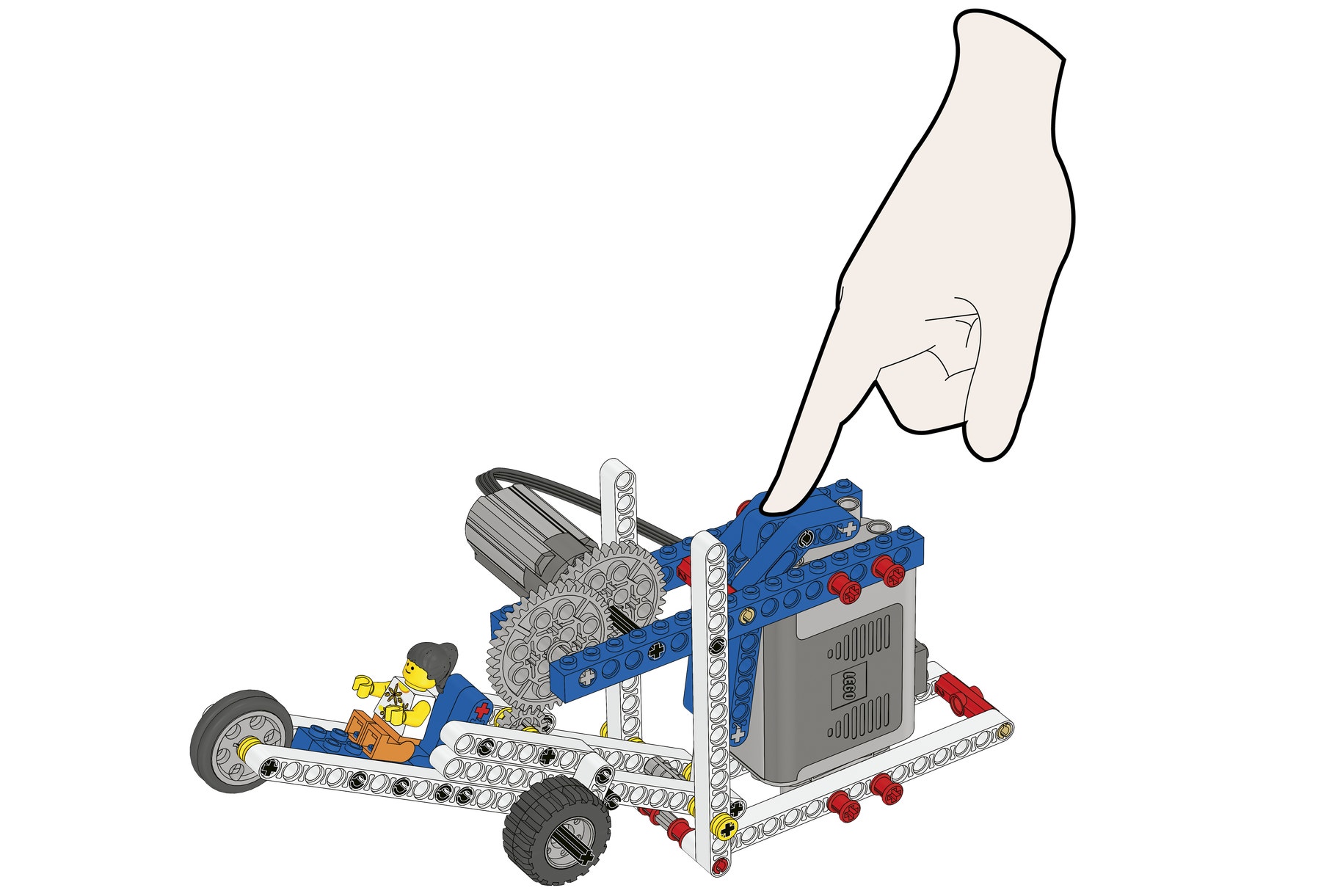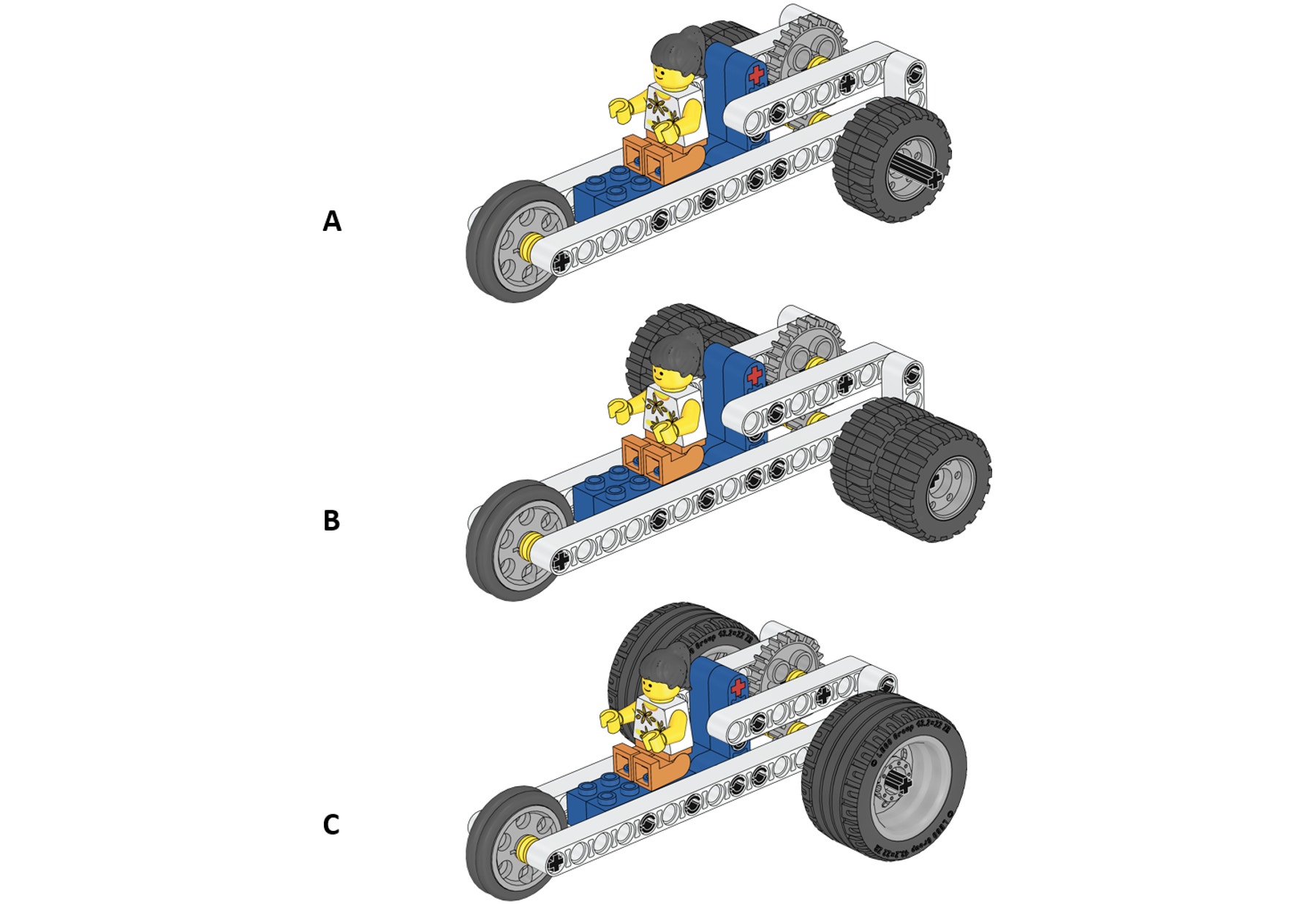Dragster
Explore the scientific concepts of gears, levers, wheels, energy, friction and measuring distances.

Connect
(5-10 Minutes)
Jack and Jill are experimenting with their dragster. With a great start from a launcher, they hope it will roll all the way from the start to the finish line. But even after a perfect launch it does not go very far.
How can we make the dragster go further?
Let’s find out!

Construct
(20-25 Minutes)
Build the Dragster and Launcher
(all of book 12A and book 12B to page 10, step 13)


Did you know?
An idler gear changes the direction of rotation, but does not affect the output speed.

Place the dragster on the launch ramp and lift it up by pressing down on the handle.
The big gear on the launcher should mesh with the gear on the dragster.
Start the motor by pushing down the battery switch.
Lower the ramp. The dragster should roll off smoothly onto the floor.
Tip:
If your dragster vibrates, one of the tires might be sitting unevenly on its hub. This increases axle friction and leads to large energy losses.

Contemplate
(20-25 minutes)
How far will the dragster go?
By changing the back wheels of your dragster you can change how far it can travel.
First predict how far dragster A will travel. Then test your prediction.
Next, follow the same procedure for dragsters B and C. Which will travel the furthest?
Test several times to make sure your results are consistent. Test results may vary depending on surface of your test track.
Dragster A (page 9, step 12) will travel approximately 0.7 m (≈ .75 yd).
Dragster B (page 12, step 15) will travel approximately 2 m (≈ 2.2 yd).
Dragster C (page 12, step 16) will travel even further, approximately 6 m (≈ 6.5 yd).

Did you know?
The small wheel weighs 9g (≈ 0.2 oz).
The large wheel weighs 13g (≈ 0.45 oz).

Can you explain what happened when you changed the wheels?
Two small wheels store more energy than one, because they have twice the mass. That is why dragster B goes further than dragster A.
Dragster C goes further than dragster B due to the larger circumference of the bigger tires, and even though axle speed is the same.
The more tire mass and the bigger the tire circumference, the further the dragster will go.
Continue
(25-30 Minutes)
Can the dragster go even further?
To gear up your dragster, first disassemble it (book 12B to page 3, step 3), and then:

Replace the 16:16 gearing with a 24:8 gearing.
Now build your geared-up dragster (book 12B to page 9, step 12).
First predict how far geared-up dragster D will travel. Then test your prediction. Next, follow the same procedure for your geared-up dragsters E and F.
Which will travel the furthest?
Dragster F will travel furthest, approximately 11 m (≈ 12 yd).
Try other ideas and combinations to make your dragster travel even further. How far does your best dragster travel?

Teacher Support
Students will explore the concepts of:
Gears
Levers
Using and combining components
Wheels
Energy
Friction
Measuring distance
Scientific investigation
9686 Simple & Powered Machines Set (two students per set recommended)
Meterstick (yard stick) or measuring tape
Up to 20 m (≈ 20 yds) of floor. You might have to use the corridor!
NGSS
Disciplinary Core Ideas: Physical Science
MS-PS3 Energy
Crosscutting Concepts
Systems and system models
Science and Engineering Practices
Developing and using models
Planning and carrying out investigations
Constructing explanations and designing solutions
Common Core Mathematics Standards
7.RP.A / 6.NS.B / 6.EE.C / 7.EE.B / 8.EE.B / 8.F.B / 6.SP.A
Common Core English Language Arts
SL 6.1 / 6.2 / 7.1 / 7.4 / 8.1
RST 6-8.3 / 6-8.4 / 6-8.7
WHST 6-8.1 / 6-8.7 / 6-8.8 / 6-8.9
Student Material
Share with:
 Google Classroom
Google Classroom



